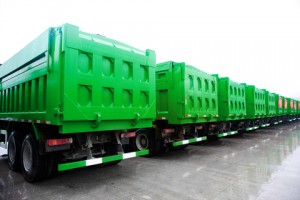 NITROGEN TIRE INFLATION TECHNOLOGY PAVES THE WAY FOR SAVINGS ON FUEL LONGER LASTING TIRES AND VEHICLE SUSTAINABILITY
NITROGEN TIRE INFLATION TECHNOLOGY PAVES THE WAY FOR SAVINGS ON FUEL LONGER LASTING TIRES AND VEHICLE SUSTAINABILITY
In view of the turmoil around the world and the U.S. dependence on foreign oil. NitroFleet99 has pioneered a Nitrogen service model and products that are now available. Previously only used by major industries such as NASCAR, the U.S. Military and the Airline industry, NitroFleet99 now provides nitrogen tire inflation to managed business fleets and consumers through the advanced technology products UltraFill99+ and TireXtender.
“The day has come for nitrogen tire inflation to be embraced in the public domain,” said NitroFleet99’s Founder and CEO Ken Lawton. “It is one of the best pieces of green technology to emerge in years, since our nitrogen services and products will further revolutionize the way people maintain their tires and improve their gas mileage in the long-term.”
Lawton has been invited by President Barack Obama and Al Gore’s Climate Reality Panel in Chicago, July 30 – August 1, to participate in their seminar on sustainable practices and carbon reduction for future generations.
With gas prices still fluctuating wildly due to world economy’s, it’s no surprise Fleet Supervisors and Consumers are looking for an effective way to reduce their dependency on oil. But do they know it’s as easy as changing the type of air that’s in their tires? A recent study by the Ford Motor Company found that the average truck driver saves 3% yearly on gas by converting to nitrogen in their tires, and extends tire wear over the life of their tires by up to 30%
In addition, according to Rubber Manufacturers Association, only one in five drivers check their tire pressure properly. A tire can be 30%-40% deflated and still maintain a normal appearance. Tires inflated with nitrogen feature larger molecules than conventional air to push against the internal walls, effectively maintaining proper pressure and extending the tire’s life up to 30% longer. The Environmental Protection Agency has also recently determined that keeping one’s tires properly inflated can save the average driver over 10 cents a gallon on gas alone. Just as an engine benefits from proper maintenance and top-offs, nitrogen tire inflation provides this same benefit for tires.
About Nitrofleet99
Ken Lawton is the founder and C.E. O. of NitroFleet99, a six-year-old company helping consumers and managed fleets to improve their tire performance through safer, longer lasting tires and improved fuel economy, creating in effect HYBRID TIRES.
No changes need to be made to the vehicle or tire, as the technology is designed to quickly fill automobile and truck tires, large and small. Versatility in varied climates further sets our technology apart from other Nitrogen systems that are membrane-based.
TireXtender is an aerosol top-off product that enables owners of nitrogen-inflated tires to easily maintain high Nitrogen purity, important for the optimal benefits of improved fuel economy, tire wear and ease of maintenance. Analogous to the quart of oil owners use to maintain optimal efficiency and performance with their engines, TireXtender and NitroFleet99 provide the winning combination for peak performance in all inflated tires.
SUQWCPGSNY8P
Related Links:
Managed Fleets and Ending America’s Dependence on Foreign Oil
Hybrid Tires and a Network of Nitrogen Services
Managed Fleets Large and Small Improve Bottom Line with Nitrogen Tire Inflation






